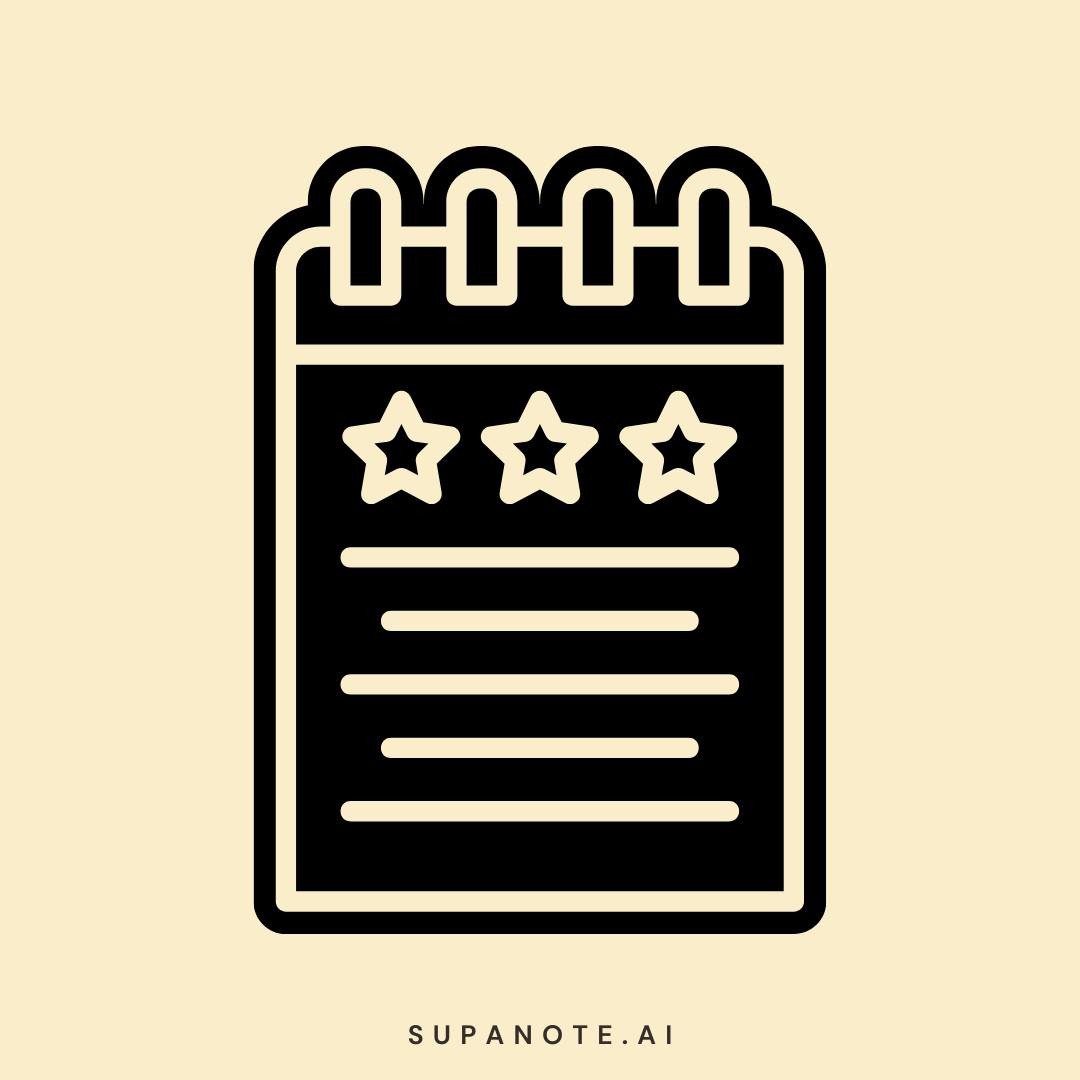Mental health professionals often spend hours on mental health documentation, balancing clinical accuracy with heavy workloads.
Whether you're in private practice or community mental health care, finding a reliable note taking format that saves time is essential. In such a case, having an effective PIE notes templates provide a solution that is both structured and efficient.
In this guide, we’ll walk through the PIE notes process, explain how PIE notes work, and show you how to use them across therapy sessions.

What Are PIE Notes?
PIE notes are a standardized format for therapy documentation used across various mental health settings. PIE stands for:
- Problem: The client’s presenting problems or self-reported experiences.
- Intervention: The clinician’s therapeutic action (e.g., cognitive restructuring).
- Evaluation: The client's response and therapist’s clinical judgment.
This format keeps session notes focused and concise, supporting mental health professionals in documenting sessions accurately while saving time.
It can include both subjective and objective information relevant to the therapeutic process.
Why PIE Notes Work in Mental Health Practices
The PIE format is ideal for documenting structured therapy sessions, especially in high-volume mental health care environments. It:
- Reduces administrative tasks and manual data entry
- Supports clinical documentation for insurance audits
- Helps in tracking client progress over time
- Promotes consistent documentation practices across healthcare providers
- Highlights treatment effectiveness and outcome evaluation
For clinicians using electronic health records or customizable templates, PIE notes offer a streamlined workflow suitable for mental health therapy and various treatment approaches.
PIE Notes Template (With Examples)
Section | Key Elements | Example |
|---|---|---|
Problem | Client's presenting issues, symptoms, or concerns | "Client reports panic attacks increasing over the past week, along with insomnia." |
Intervention | Therapeutic approach used | "Utilized cognitive restructuring to identify and reframe distorted thoughts." |
Evaluation | Client's response and plan for future sessions | "Client actively engaged in session and demonstrated improved insight. Will continue cognitive work in next session." |
This note writing format helps document progress and evaluate treatment effectiveness clearly, making it a strong alternative to SOAP notes which provide more segmented documentation.
Sample PIE Note (Individual CBT Session)
Client Name: Jane D.
Date: July 31, 2025
Session #: 6
Format: In-person
Duration: 50 minutes
Problem:
Client reported increased irritability and anxiety at work over the past week, describing difficulty concentrating and conflict with a coworker. She rated her anxiety at 7/10 and noted frequent ruminative thoughts about being “incompetent” and “always behind.” Client’s self-reported experiences indicate ongoing cognitive distortions tied to workplace stress.
Intervention:
Conducted cognitive restructuring to identify and challenge automatic negative thoughts related to performance. Practiced thought-stopping and reframe exercises in session. Introduced emotion regulation strategy from DBT (Check the Facts). Discussed work-life boundaries and used scaling questions to explore motivation for behavior change.
Evaluation:
Client was engaged and participated actively in exercises. Demonstrated insight into how her negative thoughts contribute to escalating anxiety. By end of session, anxiety level reported as 4/10. Expressed willingness to apply skills before next session and agreed to complete a daily thought log. Will continue with CBT model and incorporate values-based planning next week.
Writing PIE Notes: Best Practices
Writing PIE notes doesn’t have to be overwhelming. Follow these tips:
- Use clear clinical language to reflect the client's problems
- Include client reports and therapist observations
- Avoid vague language (e.g., "good session")
- Reflect the client's unique journey and treatment goals
- Document sessions consistently using key elements from each section
Effective PIE notes keep things simple without losing depth. When written well, they include all three components and support client centered care, without adding extra admin to your day.
Adding diagnostic codes where relevant and tying interventions back to symptoms and treatment goals helps strengthen your notes. By clearly outlining the client's presenting problems and using standardized language, you’re not just improving clarity, you’re building a solid documentation trail.
It’s also worth noting any risk or protective factors, plus any shifts in the client's goals or motivation to engage. When done right, PIE notes aren’t just notes, they’re streamlined clinical notes that reflect real-time progress and long-term client outcomes.
When to Use PIE Notes
PIE notes are ideal when you need to:
- Track client’s presenting issues and treatment progress
- Write concise session notes for brief therapy sessions
- Document interventions in community mental health settings
- Communicate clearly with other healthcare providers
PIE notes are especially helpful for progress notes that track treatment effectiveness and outcomes. They’re widely used across mental health settings and work well with other formats like SOAP notes, but PIE keeps the arc simple: problem → intervention → evaluation.
That’s what makes PIE a great fit for behavioral health interventions, brief solution-focused sessions, or any therapy involving dynamic treatment plans.
Expanding Your Use of PIE Notes
While PIE notes are often associated with brief notes, they can be adapted for complex cases and longer sessions as well. For example, in trauma-informed care or chronic condition management, you can:
- Include layered insights in the Evaluation section (e.g., shifts in the client’s thought process or readiness for change)
- Use the Intervention section to document multimodal approaches or coordinated care efforts
- Extend the Problem section to reflect biopsychosocial changes over time
By customizing your PIE note to reflect the full scope of the client’s journey, you add depth to your documentation and better support collaborative patient care.
Common Documentation Mistakes to Avoid
- Missing the Evaluation section or client's response
- Copying identical language across client notes
- Forgetting to tie interventions to treatment plans
- Not using structured format that supports documentation process
These errors can undermine both the quality of care and legal compliance. Including diagnostic codes when necessary and clearly stating the problem intervention and evaluation can strengthen your clinical notes.
You should also avoid generalizing progress without specifying what change occurred. For instance, instead of writing "Client doing better," try "Client reports improved sleep and reduced anxiety from 8/10 to 4/10 over past week."
How Supanote Enhances the PIE Notes Process
Supanote uses AI tools and direct session capture to simplify writing PIE notes. With Supanote, you can:
- Auto-generate therapy notes using audio or session summaries
- Choose between SOAP notes or PIE format
- Populate customizable templates that reflect your documentation practices
- Avoid repetitive manual data entry after each session
Because Supanote is built for therapists, it understands the nuance of clinical documentation and offers smart suggestions that match your tone, style, and therapeutic approach.

FAQs About PIE Notes
Q: What makes PIE notes effective for clinical documentation?
They capture essential information using a clear, structured format that supports mental health documentation standards.
Q: How many times should I use PIE notes in a client’s treatment process?
You should document every relevant therapy session using PIE notes to track client progress and response.
Q: Can I use PIE notes for writing progress notes across different mental health settings?
Yes. PIE notes work across various formats including group therapy, individual sessions, and telehealth.
Q: Are PIE notes useful for outcome evaluation?
Absolutely. They make it easier to evaluate client outcomes over time.
Q: Do PIE notes support client confidentiality?
Yes. Just ensure you're avoiding overly identifying information when referencing others.
Q: How does Supanote help with the PIE notes process?
It automates note writing, streamlines your note taking process, and integrates with your existing clinical workflow.
Q: Can PIE notes include subjective and objective information?
Yes. They can incorporate both what the client reports and what the therapist observes.
Q: Is there a recommended format for tracking client’s goals in PIE notes?
Supanote’s customizable templates make it easy to align interventions with specific client goals, allowing consistent documentation over time.

